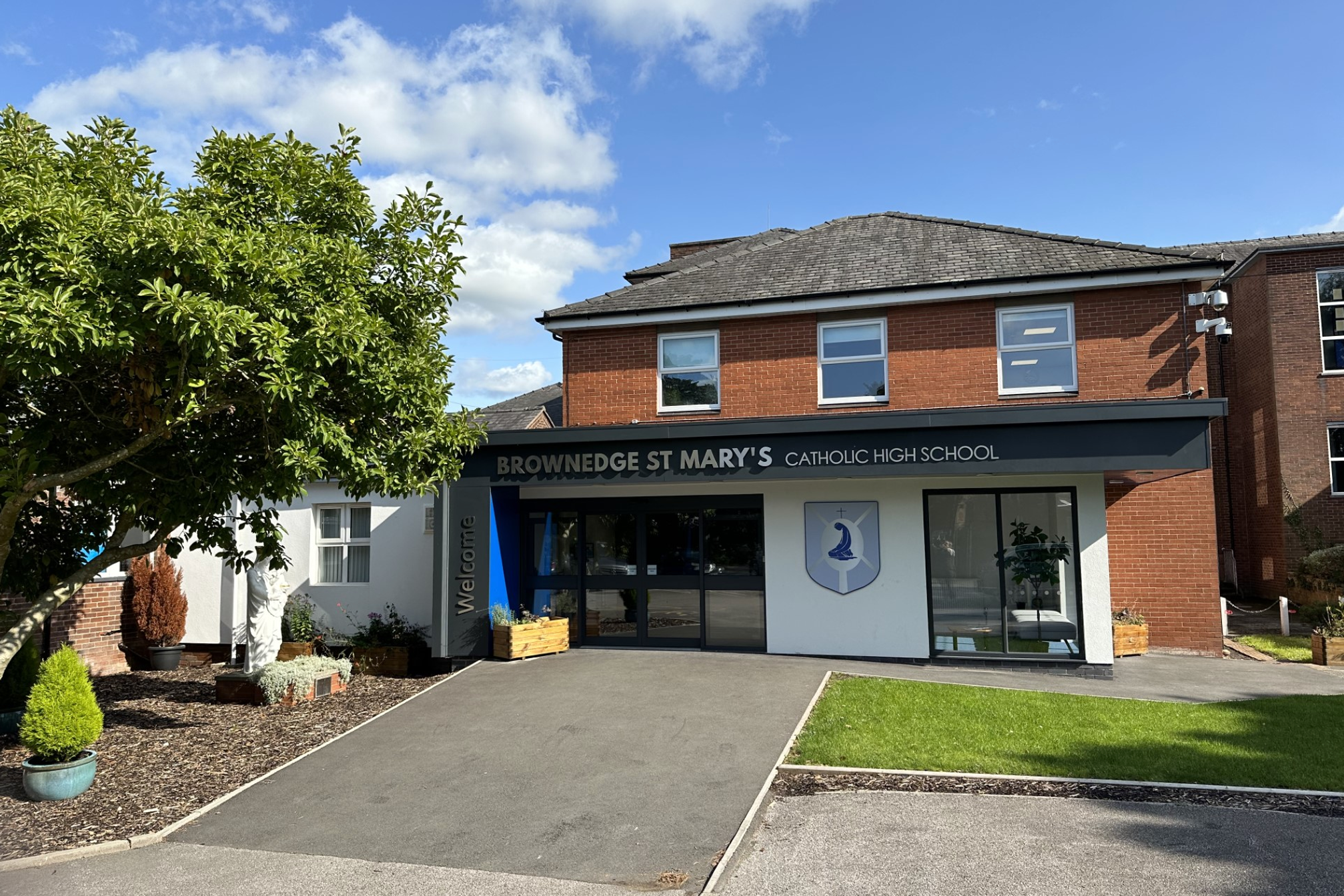Case Study
Brownedge St. Mary’s


At the Lancashire-based Brownedge St Mary’s, the school mission is crystal clear – to develop a child’s talents and help them shine with confidence and success.
Having opted to embed Lexonic in their literacy approach, that outcome looks ever more likely.
At Brownedge, you’re a school which has always championed the ‘reading journey’ and likes its pupils to see the art of reading as one for academic purpose, but also for pleasure.
What led you to explore a relationship with a literacy solution provider?
We’ve been in a period of transition where we recognise the contextual and national issues surrounding reading, and so we wanted a core mechanism to enhance the sharpness of our focus of reading accessibility.
We found that in Lexonic, having investigated them and spoken to another satisfied school.
What level of scoring were you seeing among your pupils before reaching out to Lexonic?
The majority of our pupils were averaging between 65-78% at the expected standard of reading across year cohorts, based on the KS2 baseline tests.
We felt that this still left a deficit, and even where there were stronger pupils, we knew there was a potential to close gaps with the right approach.
What in particular made you decide that Lexonic was right for you, compared with so many other solutions on the market?
Sustainability, impact, age-appropriacy.
They were a good fit for us.
There was also something significant about the timing for onboarding Lexonic, wasn’t there? Tell us about other things you’d been doing in respect of strengthening the literacy culture in school.
We have also recently refurnished and renovated our Library space, and we consider ourselves to be on an upward trajectory to positively affirming reading for meaning and reading for pleasure across KS3 and KS4.
That made for even better timing to have the right solution in place and benefit from a whole-school way of thinking around literacy.
How did implementation take place?
We already utilise the NGRT programme to baseline and monitor the reading ages of all our year groups. We conduct these reading tests at the end of each academic year, with year 7s also being tested upon entry.
Recognising these gaps across certain year groups and cohorts, we wanted one, strong system to embed into our curriculum to, not only improve, but enhance the reading ability of our pupils across all subjects.
We began with the Advance training for three staff members (one HLTA and two TAs).
Following on from this we had Leap training for two staff members (one HLTA and one TA).
Having three trained staff members within Lexonic allowed us to look at how many groups we could facilitate.
From there, you were able to define your groups.Tell us about the rationale.
We looked at the following in order to make the right decision around who accesses the intervention:
- Who are the highest priority pupils? For us it was PP, SEND and Year 8 as a cohort
- What about KS4? We focused on Year 10 first, with sight of including Year 11 where possible in the next cycles
- What will make the groups successful? We carefully managed group dynamics to support the process. This has been fundamental to the culture of Lexonic in school.
- How will we inform parents, carers and stakeholders? We shared the intentions with school governors, and ensured that all pupils starting the programme were congratulated and sent a formal letter.
It sounds like you took a really systematic approach:
Yes. Once we had chosen the pupils who would access each cycle of Lexonic, we completed the starting assessments (WRAT 5 for Advance, and the diagnostic for Leap), we then used this to look at group dynamics of pupils, to create our Lexonic timetable.
And how about the delivery and initially assessing how it was going?
Once we had started delivering sessions and had gathered more knowledge around the morphemic analysis of words, we started to feed this back to staff.
We held CPD for all subject teachers, and teaching assistants, explaining what Lexonic is and how it is effective for pupils.
We shared with teaching staff the subject specific vocabulary lists (A fabulous free resource from Lexonic) and discussed how these can be utilised within lessons across school.
In addition to this, we showed teaching staff and teaching assistants Wordology, enabling them to have access to this fantastic resource, and using it within lessons.
What were the first impressions of the school community?
The school community were all very on board with it.
Once the roll out began with pupils, word spread across the school and pupils began to ask if and when they would be completing Lexonic and were eager to do so.
Staff were happy with pupils coming out of lessons to access the programme, as we set it up on a two-week rolling programme, so pupils would not repeatedly miss the same lesson.
Once we delivered some CPD to teaching staff, and informed them more about Leap and Advance, they were able to clearly see the differences.
This enabled staff to clearly understand which pupils would need an extra layer of support within classes.
Was cost a concern to you?
Cost is always an implication to consider within a school context, and we were very mindful that we wanted Lexonic to be a primary, core reading programme within our school.
Therefore, we have done all that we can to ensure the build and success of the programme has been incremental, within a positive culture, and it has made it cost-effective based on our results.
What results have you seen so far?
So far, the results we have seen from our pupils have been amazing.
As a school, we are currently averaging a reading age gain of 48 months from the Advance programme. Some are even reaching a gain of 90 months with their reading age.
We have seen results not only through data, but also through the confidence of our pupils, they no longer feel nervous about reading in class, due to the toolkit of skills which Lexonic has provided them with.
How have you found the ongoing support of Lexonic?
The webinars have been extremely helpful and if we have had any questions or concerns, our regional trainers, account manager and the delivery support team have always responded to our emails quickly.
Where does your use of Lexonic go from here?
Our vision is to embed Lexonic as a reading programme that will, eventually, function primarily in Year 7.
We are also using the data and results from Lexonic to monitor the NGRT results of our cohorts in summer term, to see how it has impacted on their overall cognitive ability.
We are continuing to roll out Wordology throughout the use of all departments, so that pupils can continuously build up their skills of morphemic analysis.
What would you say to any school leader considering Lexonic?
- It needs a strong leader to run, assess and track it. This should be one person who is, ideally, trained on the programme(s) and can managed and support anyone else leading the sessions and groups.
- Build up sessions into the timetable incrementally. Don’t over-fill your time too soon. Find what works for your school context and pupils, allowing for school events which may affect session timings on occasion.
- Don’t call it an ‘intervention.’ Create a positive, congratulatory culture with staff and pupils by celebrating access and graduation from the programme. Use certificates and rewards to maintain this.
- Carefully consider how you will report results to parents, and how you can empower them to understand the progress their child is making/ has made. Fit it into whole-school reporting cycles to give it impetus.
To learn more about the programmes implemented at Brownedge St Mary’s, contact the Lexonic team today.
Ready to empower learners? Start your new literacy journey today.
Equip learners with essential reading skills and a rich vocabulary for lifelong success.